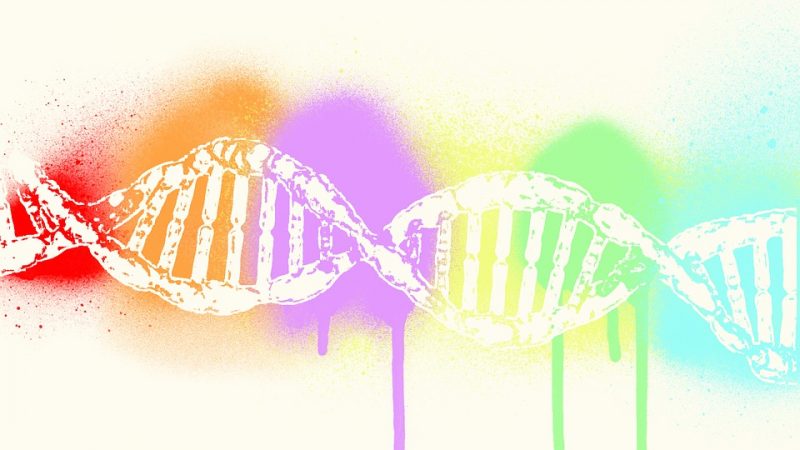
Exposure of deoxyribonucleic acid to endogenous or exogenous chemical and physical agents often leads to conformational changes in DNA structure. Small inorganic and organic molecules can non-covalently interact with DNA via formation of DNA-guest complexes.
A ligand fixation into DNA structure can be performed by electrostatic binding between a positively charged guest and negatively charged DNA host by binding to the major and minor groove of DNA and by intercalation, meaning the insertion of the ligand molecule between DNA base pairs.
Investigation of a DNA-ligand interaction helps us to enlighten the structural alterations of DNA and the action mechanism of guest molecules, for instance, drugs. The formation of such complexes may be investigated by electrochemical DNA-based biosensors which consist of a biorecognition element (double- or single-stranded DNA) immobilized on the working electrode surface. Various advantages regarding to specificity, simplicity at operation, rapid response, potential miniaturized platform, low power requirement, and relatively low cost of the analysis make DNA-based biosensors great candidates for detection of many targets, including methylxanthine-based drugs, such as theophylline (TP), used for treating respiratory and cardiovascular problems, such as chronic obstructive pulmonary disease. It is structurally similar to the nucleobases and other methylxanthines, especially to caffeine.
Nowadays, not many reports on DNA-methylxanthines interactions have been published, so we decided to perform an electrochemical and spectrometric study of the interaction of TP with double-stranded (dsDNA) or single-stranded (ssDNA) salmon sperm DNA, guanosine (GMP), or adenosine monophosphates (AMP) using square wave and cyclic voltammetry.
Electrochemical study of DNA-TP interaction
After the dsDNA-TP interaction, the anodic peak of guanine moiety showed a significant decrease with increasing incubation time. Moreover, a slight shift of peak to more negative potential values was detected which indicates an energetically simpler oxidation of guanine. The original anodic peak of adenine moiety was practically not changed in case of its height but exhibited also a slightly negative potential shift. To deeply investigate the DNA-TP interaction, a single strand of salmon sperm DNA prepared by the denaturation of dsDNA was used to more effectively study the formation of DNA-TP complex because of a better steric access for electron transfer between the electrode surface and nucleobases.
After the incubation of ssDNA-based biosensor in TP solution, a significant decrease of both anodic peaks, guanine and adenine moieties, without a potential shift was detected, thus indicating an interaction of both nucleobases with TP. It may be considered as an arrangement of TP molecules outside the ssDNA backbone. Such decreases of guanine and adenine moieties were also observed using a method known as biosensing. In this case, the mononucleotides, such as GMP and AMP, were immobilized onto the electrode surface and the electrochemical measurements were performed in solution.
Spectrometric study of DNA-TP interaction
Regarding DNA as a chromophore capable of absorbing light, spectrometric approaches in UV and the visible light spectrum are commonly used to characterize the interactions between biomolecules and drugs. The formation of DNA-TP complex caused two different changes in UV-vis spectra. A bathochromic shift (to more positive wavelength values) and a hyperchromic shift (to higher absorbance values) of UV-vis spectra were observed. An efficient tool for investigating a target binding sites on the DNA double helix structure, sequence preference, DNA secondary structure, and the structural variations in DNA-drug complexes is an infrared spectroscopic study.
After TP binding, the absorption bands of DNA nucleobases strongly diminished, which confirmed the DNA-TP interaction as well as the changes in DNA double helix structure. We assumed the formation of DNA-TP complex was based on TP binding to the oxo-form of guanine through hydrogen bonding (NH-CO) or to the enol form of guanine while the oxo-form showed a higher stability. Using the enthalpies of various hydrogen bonds OH⋯N (28.9 kJ mol−1), NH⋯N (13 kJ mol−1), NH⋯O (8 kJmol−1) and OH⋯O (20.9 kJ mol−1), we obtained the value about 19.7 kJ mol−1 referring to the oxo-form. In the case of TP binding to adenine moiety, the complex might be formed by only one possible concept with significantly lower constant of stability. Such approach corresponded very well with an electrochemical study based on preferential TP binding to guanine moiety.
Till now, the majority of the DNA-drug association interaction studies have been preferentially investigated using spectrometric methods. On the contrary, this work confirmed that TP binds to DNA nucleobases for the first time using electrochemical approach.
These findings are described in the article entitled Interaction of DNA and mononucleotides with theophylline investigated using electrochemical biosensors and biosensing, recently published in the journal Bioelectrochemistry. This work was conducted by Katarína Nemčeková, Ján Labuda, Viktor Milata, Jana Blaškovičová, and Jozef Sochr from the Slovak University of Technology in Bratislava.









